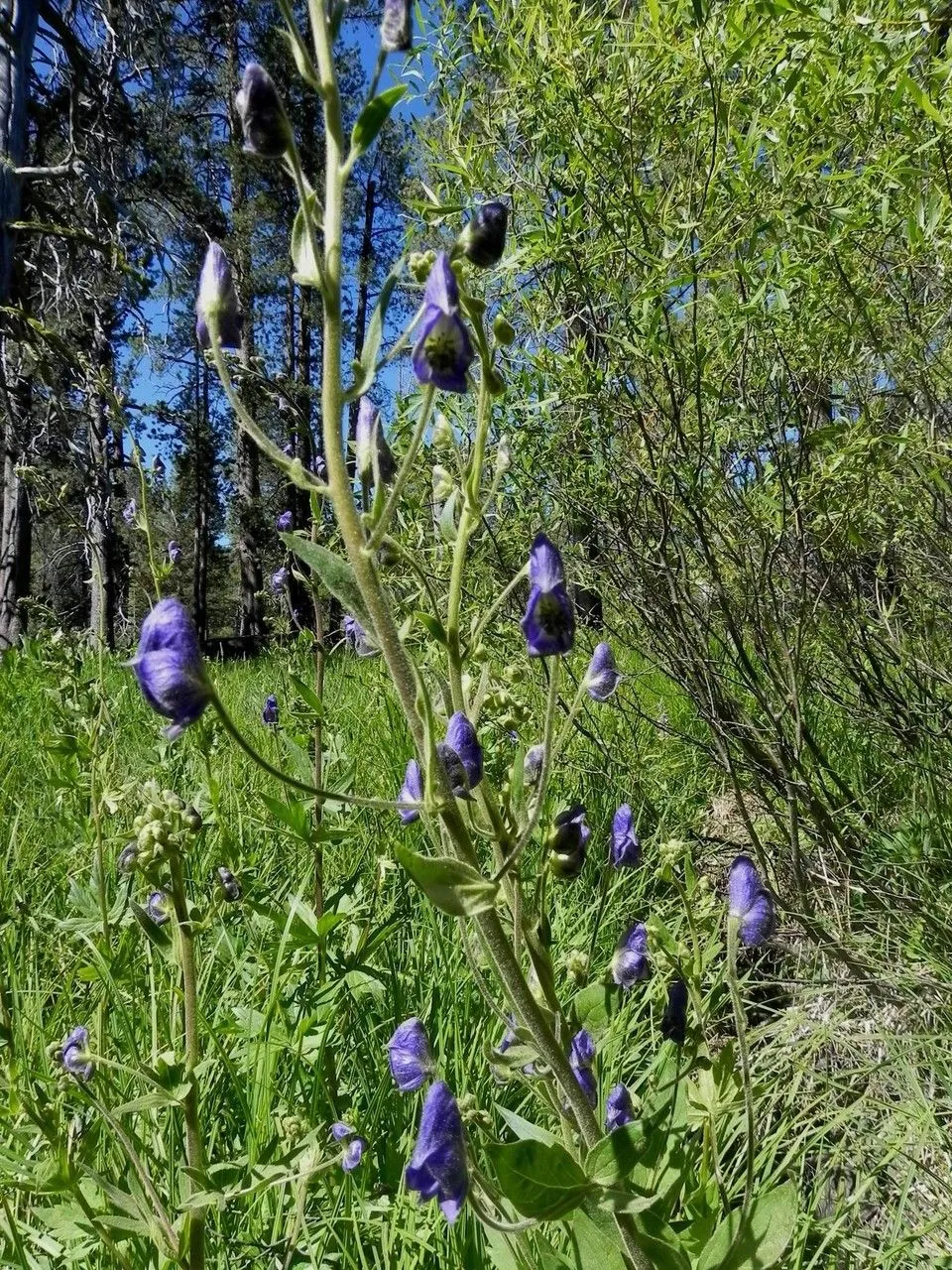
Author: Nutt.
Bibliography: J.Torrey & A.Gray, Fl. N. Amer. 1: 34 (1838)
Year: 1838
Status: accepted
Rank: species
Genus: Aconitum
Vegetable: False
Observations: W. Canada to N. & WC. U.S.A., Mexico (Sonora, Chihuahua)
Columbia aconite, scientifically known as Aconitum columbianum, is a noteworthy member of the Ranunculaceae family. Originally described by Nuttall and further detailed in the authoritative botanical literature by J. Torrey and A. Gray in their 1838 work, “Flora of North America,” this plant stands out because of its unique characteristics and widespread geographical presence.
The Columbia aconite is predominantly found in western Canada, stretching across northern and west-central regions of the United States, and extending its reach down into Mexico, particularly in the states of Sonora and Chihuahua. This distribution highlights the plant’s adaptability to varying climates and terrains, ranging from temperate regions to more desert-like environments.
Botanically, Columbia aconite is recognized for its distinctive foliage and striking flowers, which contribute both ecological and aesthetic value to its native habitats. The plant’s flowers typically exhibit a rich, purplish-blue hue, which stands out against the greenery of its surroundings and attracts a variety of pollinators, playing a crucial role in local ecosystems.
Despite its beauty, Aconitum columbianum, like other members of its genus, contains toxic compounds and must be handled with care. This dual nature—both enchanting and perilous—adds to its intrigue and importance within the botanical community.
In summary, Columbia aconite (Aconitum columbianum) is an influential species within the Ranunculaceae family, noted both for its widespread occurrence in North America and Mexico and for its striking appearance. Originally documented in the early 19th century, it continues to capture the interest of botanists and nature enthusiasts alike.
Eng: columbia aconite, columbian monkshood, columbia monkshood
Fra: aconit du columbia
En: Columbia aconite, Columbian monkshood, COLUMBIA MONKSHOOD, Monkshood (columbian)
Fr: Aconit du Columbia
Taken Jul 23, 2022 by Anna DeGiuli (cc-by-sa)
Taken Jul 4, 2014 by EOL − Donna Pomeroy (cc-by-nc)
Taken Jun 7, 2000 by EOL − Charles Webber (cc-by-nc-sa)
Taken Jul 9, 2014 by EOL − rosanna (cc-by-nc)
Taken Jul 9, 2014 by EOL − Tim Giller (cc-by-nc)
Taken Aug 12, 2022 by tyler munson (cc-by-sa)
Taken Jul 9, 2014 by EOL − Tim Giller (cc-by-nc)
Taken Jul 9, 2014 by EOL − craigb (cc-by-nc)
Taken Jul 27, 2021 by Valerie Mason (cc-by-sa)
Taken Sep 5, 2019 by rhonda (cc-by-sa)
Taken Dec 21, 2015 by EOL − ellen hildebrandt (cc-by-nc)
Taken Jan 23, 2016 by EOL − ellen hildebrandt (cc-by-nc)
Taken Jan 24, 2016 by EOL − ellen hildebrandt (cc-by-nc)
Taken Aug 14, 2012 by EOL − Chris Brown (cc-by-nc)
Taken Jun 23, 2014 by EOL − grnleaf (cc-by-nc)
Taken Sep 6, 2022 by S (cc-by-sa)
© copyright of the Board of Trustees of the Royal Botanic Gardens, Kew.
Growth form>: Single Crown
Growth habit>: Forb/herb
Growth rate>: Moderate
Ph maximum: 7.2
Ph minimum: 5.4
Family: Myrtaceae Author: (F.Muell.) K.D.Hill & L.A.S.Johnson Bibliography: Telopea 6: 402 (1995) Year: 1995 Status:…
Family: Rubiaceae Author: Pierre ex A.Froehner Bibliography: Notizbl. Bot. Gart. Berlin-Dahlem 1: 237 (1897) Year:…
Family: Sapindaceae Author: Koidz. Bibliography: J. Coll. Sci. Imp. Univ. Tokyo 32(1): 38 (1911) Year:…
Family: Asteraceae Author: A.Gray Bibliography: Pacif. Railr. Rep.: 107 (1857) Year: 1857 Status: accepted Rank:…
Family: Fabaceae Author: Medik. Bibliography: Vorles. Churpfälz. Phys.-Ökon. Ges. 2: 398 (1787) Year: 1787 Status:…
Family: Aspleniaceae Author: (Cav.) Alston Bibliography: Bull. Misc. Inform. Kew 1932: 309 (1932) Year: 1932…